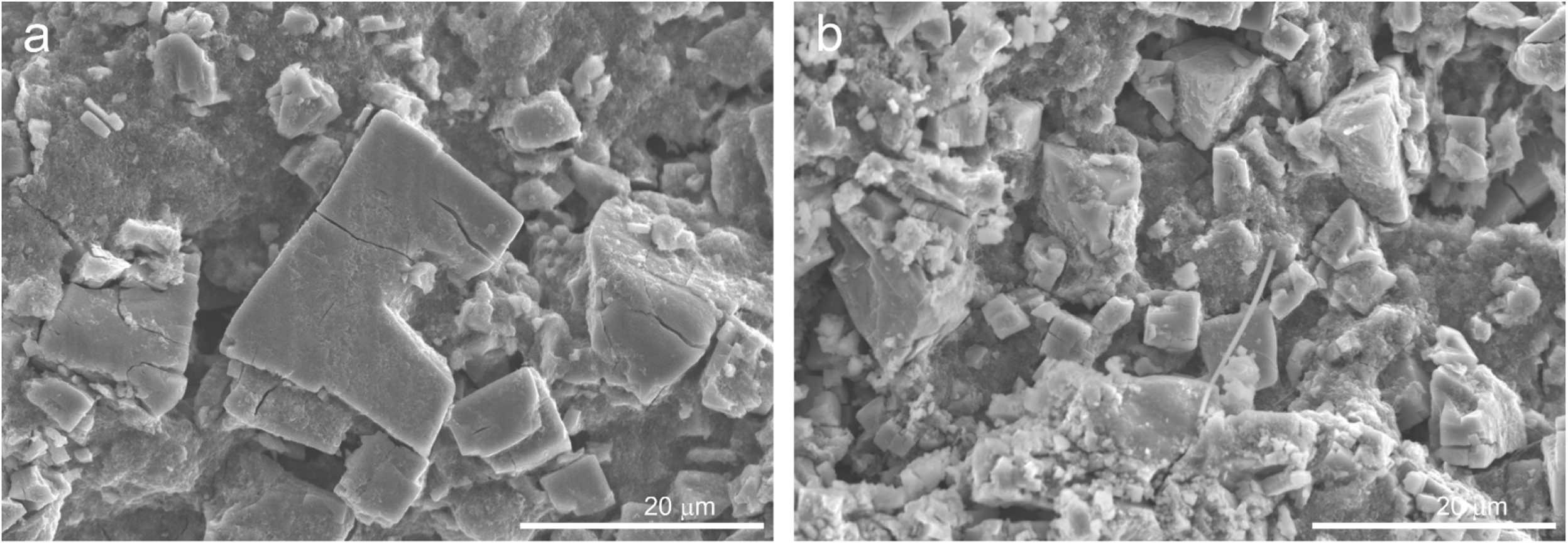Peculiarities of charge-discharge processes in PW electrodes with different level of dehydration
News, 13 August 2024
A research team from the Laboratory of Neutron Physics and Laboratory of Nuclear Reactions at JINR, Centre for Cooperative Research on Alternative Energies CIC energiGUNE (Spain), and Scientific-Practical Materials Research Centre of the National Academy of Sciences of Belarus conducted a study of charge-discharge processes in Prussian white (PW) electrodes with different level of dehydration. Results of the research pointed the way to improve the material performance for PW-based sodium-ion batteries.
Prussian white, known as an analogue of Prussian blue pigment, is a promising cathode material for sodium-ion batteries. PW exhibits advantages such as high specific capacity, ease of synthesis, and low cost. However, the presence of interstitial and coordinated water in PW materials significantly influences their electrochemical properties.
 Scanning electron microscopy images of the PW electrode preheated at 140 °C (a) in the initial state and (b) after 350 charge-discharge cycles
Scanning electron microscopy images of the PW electrode preheated at 140 °C (a) in the initial state and (b) after 350 charge-discharge cycles
In this work, a dehydration of the commercial PW powder and an impact of the preheating of the PW electrodes on their structural and electrochemical behaviour is examined using in situ/operando neutron and X-ray diffraction, along with complex TG-IR and FTIR techniques. The dehydration of the PW powder under the vacuum annealing conditions occurs mainly between 100 and 150 °C. At temperatures above 180 °C, a decomposition of the PW powder is detected. Preheating the electrode at 180 °C promotes the formation of a larger fraction of dehydrated rhombohedral phase, resulting in higher capacity compared to electrodes without preheating and preheated at 140 °C.
Carbon content is to be an important factor for stable electrode cycling. Capacity values of ∼100 mAh g-1 and 83 mAh g*-1 at 5 C and 10 C cycling rates, respectively, are achieved when using 15 wt% content of carbon additive for the electrode preparation. Structural aspects of the degradation of PW electrodes during cycling are discussed.
The Journal of Alloys and Compounds published an article on this research. Authors: Natalia Samoylova, Ivan Bobrikov, Ihar Razanau, Sergei Sumnikov, Roman Vasin, Ekaterina Korneeva, Olga Ponomareva, Uladzimir Novikau.